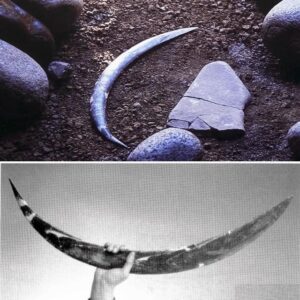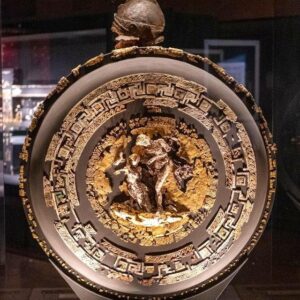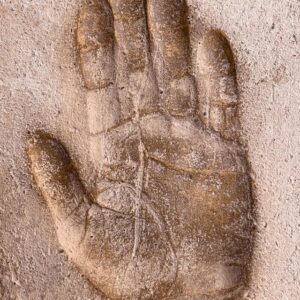A Cursed Love: The Mysterious Story Behind a Nail-Pierced Clay Doll Found in Egypt

In a chilling intersection of love, desperation, and ancient ritual, archaeologists made a startling discovery near Thebes, Egypt—one that unveils the darker corners of human emotion in antiquity. During an excavation of a ceramic vase, researchers uncovered a clay figurine alongside a lead plate inscribed with a spell in Greek. Although the statue was found in Egypt, it is unmistakably Greek in origin, dating back to the 3rd or 4th century BC. Today, this eerie artifact resides in the Louvre Museum in Paris, in the section dedicated to Ancient Egypt.
The clay figure, roughly shaped like a human female, sits in a disturbing pose—kneeling with her arms and legs bound tightly behind her back. What makes this discovery even more haunting is the violent treatment inflicted upon the figure. Thirteen nails pierce the doll: one in the top of the head, one in the mouth, one in each eye and ear, one in the chest, one in each palm and foot, and two driven into the inner parts of the body. At first glance, the arrangement suggests an act of aggression—possibly a form of ancient voodoo or curse intended to harm.
Yet the inscription on the accompanying lead plate tells a different, and arguably more disturbing, story. Rather than being a symbol of hate or vengeance, the spell etched into the plate is a love incantation. It was cast by a man yearning for the affection of a woman named Ayas, the daughter of Origen. Written in ancient Greek, the plea implores the goddess Ptolemais to ensure that Ayas falls helplessly in love with him.
The translated inscription reads:
“Great Ptolemais, that Ayas, daughter of Origen, loves me. Do not let her eat or drink until she comes to me, and do not let her meet any other man except me. Do with her what you will until she agrees to be alone with me. As long as I live, she will listen to me, love me, and always tell the truth.”
This text reveals a complex web of emotional manipulation masked as affection. The man’s request to the divine goes beyond a mere desire for love—it seeks control over the woman’s body, mind, and soul. He calls upon higher powers to isolate her from all other men, deprive her of basic needs until she surrenders to his will, and to secure her eternal obedience.
The symbolism of the nails serves to “bind” Ayas spiritually and emotionally, rendering her helpless against the will of the spellcaster. In ancient Greek magical practices, such figurines—often called kolossoi—were used in binding rituals intended not just to harm, but to dominate. The nails driven into the eyes, ears, and mouth imply an attempt to suppress the woman’s autonomy—she would see, hear, and speak only as the man desired.
This haunting object not only exemplifies the rituals of ancient Greek magic but also speaks volumes about gender, desire, and power in antiquity. While modern viewers might interpret this figure as a disturbing relic of obsessive love, it also offers a rare and visceral glimpse into ancient beliefs and emotional struggles.
Now housed behind protective glass in the Louvre, this small clay figure—so fragile yet so powerful in meaning—stands as a chilling testament to the lengths to which love, when twisted by obsession, could be taken in the ancient world.





